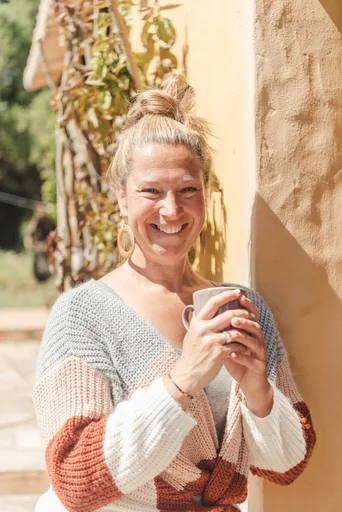3 Prep Poses for Bow Pose (Dhanurasana)

Welcoming Bow Pose into Your Practice
If you're looking to enhance your yoga practice, Bow Pose is a fundamental asana that can bring numerous benefits. Before delving into the prep poses for Dhanurasana, it's essential to understand the basics and advantages of Bow Pose.
Understanding the Basics of Bow Pose
The Significance of Bow Pose in Yoga
Bow Pose, also known as Dhanurasana, holds an iconic place in the realm of yoga. This backbend posture not only strengthens various muscle groups but also stimulates the respiratory system. By opening the rib cage, it allows for deeper breaths, which can alleviate breathing difficulties such as asthma and bronchitis.
Bow Pose Basics: A Foundation for Flexibility and Strength
The full expression of Bow Pose requires lifting both the chest and legs off the floor, creating a bow-like shape with the body. This action engages and extends multiple muscle groups, including the back, abdomen, arms, and legs. It serves as an intermediate yoga pose that fosters flexibility and strength throughout the entire body.
The Benefits of Bow Pose
Strengthen Core Muscles and Ease Lower Back Pain
Performing Bow Pose helps strengthen core muscles while simultaneously easing lower back pain. The posture gently stretches and strengthens the back muscles, preparing them for deeper backbends in Dhanurasana.
Open Your Shoulders and Chest for Better Posture
In addition to its physical benefits, Bow Pose opens up the shoulders and chest, promoting better posture by releasing tension in these areas. Regular practice can counteract the effects of prolonged sitting, such as slouching or kyphosis (abnormal curvature of the spine), leading to improved overall posture.
Preparing Your Body for Bow Pose
Before diving into the full expression of Bow Pose (Dhanurasana), it's crucial to prepare your body adequately. This involves incorporating prep poses and counter poses into your yoga routine to enhance your overall experience and ensure a balanced practice.
The Importance of Prep Poses
How Prep Poses Enhance Your Bow Pose Experience
Integrating prep poses into your yoga practice serves as a foundational step in mastering Bow Pose. These preparatory asanas aim to strengthen the back, open the shoulders, and engage the core, laying the groundwork for a successful execution of Dhanurasana. By gradually introducing these poses, you can improve flexibility and build the necessary strength to achieve the full expression of Bow Pose.
Prep Poses for Dhanurasana: Building the Foundation
The significance of prep poses lies in their ability to target specific muscle groups essential for performing Bow Pose effectively. For instance, incorporating back-strengthening postures like Locust Pose (Salabhasana) helps mitigate backaches and neck pain while energizing the body. Additionally, including hip-opening asanas such as Bridge Pose (Setu Bandhasana) stretches the abdomen, chest, shoulders, hips, and thighs—preparing these areas for the demands of Dhanurasana. Furthermore, engaging in core-focused postures like Cobra Pose (Bhujangasana) strengthens not only the back muscles but also the thighs and buttocks, contributing to improved stability during Bow Pose.
Counter Poses: Balancing Your Practice
Why Include Counter Poses in Your Routine
Incorporating counter poses into your yoga routine is essential for maintaining balance within your practice. After engaging in deep backbends like Bow Pose, it's crucial to introduce counteracting postures that focus on forward folds or gentle twists. These counter poses help alleviate any tension or compression created during backbending asanas while promoting spinal alignment and overall equilibrium.
Recommended Counter Poses for Bow Pose
Child's Pose (Balasana): This gentle forward fold provides a soothing stretch to the lower back and promotes relaxation after performing Bow Pose.
Downward-Facing Dog (Adho Mukha Svanasana): This posture elongates the spine while stretching the shoulders and hamstrings—offering a well-rounded release after engaging in deep backbends.
Seated Forward Bend (Paschimottanasana): A calming counter pose that stretches the entire back body, relieving any residual tension from practicing intense backbends like Dhanurasana.
By integrating these prep poses and counter poses into your yoga routine, you can cultivate a holistic approach to mastering Bow Pose, ensuring both physical readiness and energetic balance.
3 Essential Prep Poses for Dhanurasana

Preparing the body for Bow Pose involves integrating essential prep poses that target specific muscle groups, enhancing flexibility, and building strength. These preparatory asanas serve as foundational steps in mastering the full expression of Dhanurasana.
Locust Pose (Salabhasana)
Strengthening the Back and Legs
Locust Pose, also known as Salabhasana, is a beneficial preparatory posture that strengthens the back and legs, essential for maintaining stability during Bow Pose. This backbend variation engages the entire back body, including the lower back, glutes, and hamstrings, promoting overall spinal health and resilience.
How to Perform Locust Pose
To practice Locust Pose, begin by lying on your abdomen with your arms alongside your body. As you inhale, lift your chest, head, arms, and legs off the mat while keeping your gaze forward. Ensure that your shoulders are drawn away from your ears to avoid tension in the neck. Hold this position for several breaths before gently releasing back to the mat.
Bridge Pose (Setu Bandhasana)
Opening the Chest and Shoulders
Bridge Pose, or Setu Bandhasana, serves as an effective prep pose for Bow Pose, focusing on opening the chest and shoulders while also stretching the spine. This asana creates space in the thoracic region, counteracting any tightness accumulated from prolonged sitting or hunching forward.
Steps to Achieve Bridge Pose
To perform Bridge Pose, lie on your back with your knees bent and feet hip-width apart. As you exhale, press into your feet to lift your hips towards the ceiling while interlacing your hands beneath you. Keep your knees aligned over your ankles and draw your shoulders underneath you to open up through the chest. Hold this pose for a few breaths before slowly lowering back down.
Cobra Pose (Bhujangasana)
Preparing the Spine for a Deeper Bend
Cobra Pose, or Bhujangasana, is a vital prep pose that prepares the spine for deeper backbends like Bow Pose. This gentle yet effective posture targets the muscles of the upper back and shoulders while also providing a mild stretch to the abdominal region.
Cobra Pose Technique and Benefits
To practice Cobra Pose, lie on your abdomen with your palms placed beneath your shoulders. As you inhale, press into your hands to lift your chest off the mat while keeping your elbows close to your body. Engage your legs by pressing the tops of your feet into the mat to support this gentle backbend. Hold this position for a few breaths before releasing back down.
By incorporating these essential prep poses into your yoga routine, you can effectively prepare both physically and energetically for mastering Bow Pose (Dhanurasana).
Integrating Bow Pose into Your Yoga Routine
From Prep Poses to Bow Pose: A Seamless Transition
As you progress from the preparatory poses to the full expression of Bow Pose, it's essential to seamlessly integrate this empowering asana into your regular yoga routine. Embracing Bow Pose allows for a holistic practice that nurtures both physical and energetic well-being.
Putting Bow Pose into Practice
Incorporating Bow Pose into your yoga routine fosters a deeper connection with your body, promoting strength, flexibility, and balance. This backbend posture not only engages the entire back body but also opens the chest and shoulders, creating a sense of expansion and vitality. By dedicating time to practice Bow Pose regularly, you can experience enhanced mobility and an uplifted spirit, aligning with the transformative principles of yoga.
Tips for a Safe and Effective Bow Pose
Prioritize Alignment: Focus on distributing the backbend evenly throughout the spine while keeping the knees hip-width apart to maintain stability.
Engage Core Muscles: Activate the core to support the lower back and prevent overarching during the pose.
Use Props Mindfully: Utilize props such as yoga blocks or straps to assist in achieving proper alignment and gradually deepen your stretch over time.
Reflecting on Your Bow Pose Journey
Personal Insights and Experiences:
Susan, a dedicated practitioner of Bowspring yoga, attests to its profound impact on her overall well-being. She emphasizes how this method has significantly enhanced her mobility and strength over 17 years, making it a sustainable practice for years to come.
An anonymous individual shares their positive experience with Bow Pose, highlighting its gentle yet effective impact on their back. They express eagerness in incorporating modifications learned from tutorials into their daily routine, demonstrating enthusiasm for growth within their practice.
Encouraging Continuous Practice and Improvement:
Reflecting on these testimonials underscores the transformative potential of Bow Pose within one's yoga journey. Embracing continuous practice fosters growth, resilience, and longevity in reaping the benefits of this empowering asana.
See Also
Beginner-Friendly Yoga Poses: Your Questions Answered
Enhance Your Practice with 4 Meaningful Mudras
Satya Yoga Flow: Poses, Mantras, Mudras, Meditation, and More
We bring back the importance of initiation into womanhood by Roos-Veerle Krijnen & Ella-June Henrard
Welcome to the Women’s Initiation Retreat by Naked Truth Retreats, a transformative journey into the depths of your True Feminine Nature. This retreat, scheduled from 17th to 24th August 2024 in Portugal, invites you to remember the sacredness and wholeness of your being.
Roos-Veerle Krijnen & Ella-June Henrard



